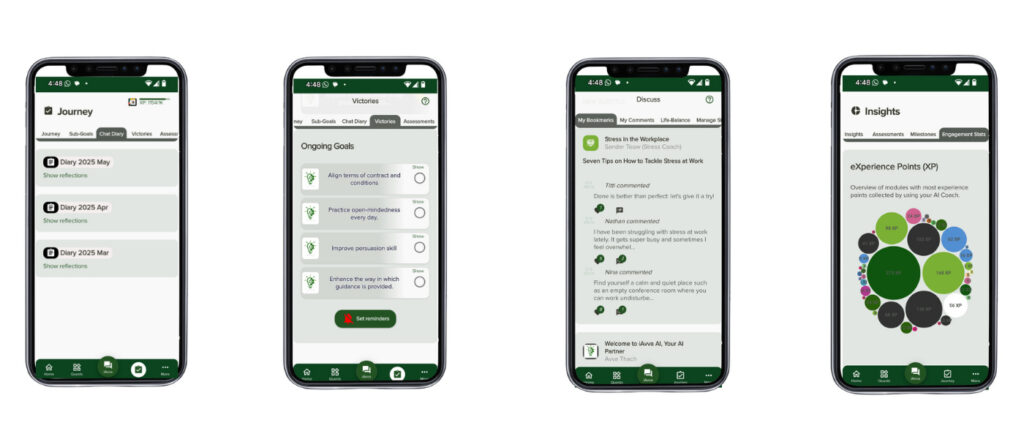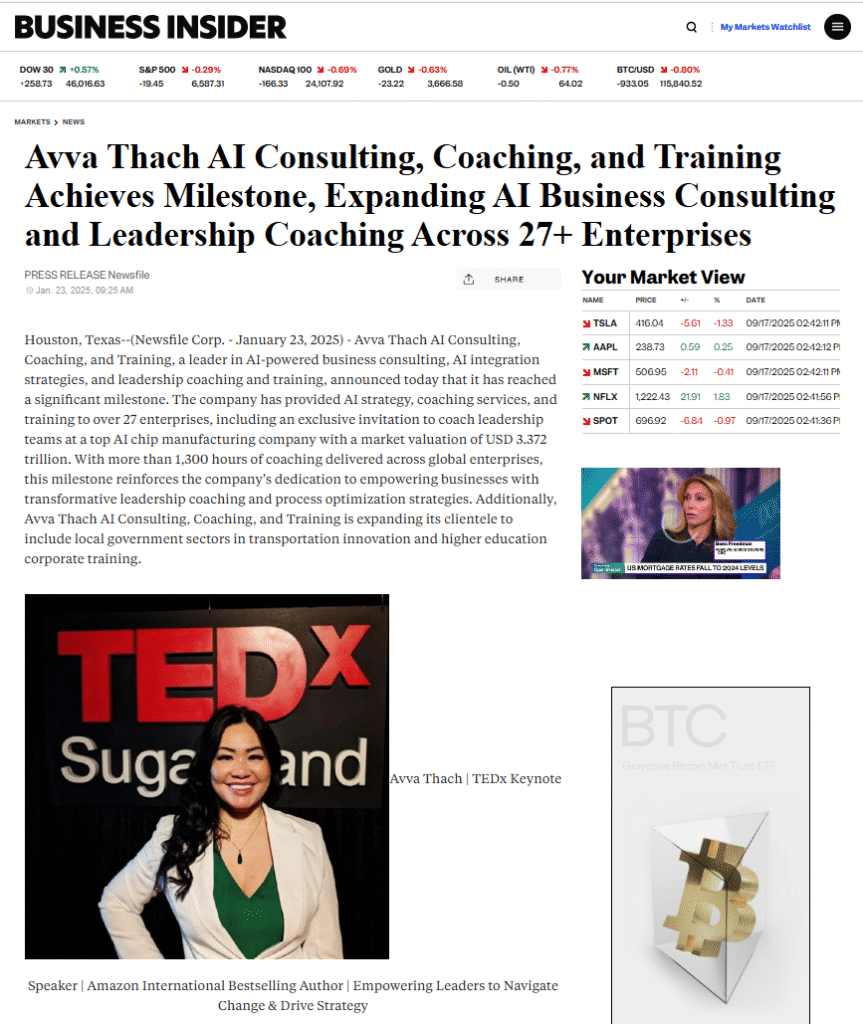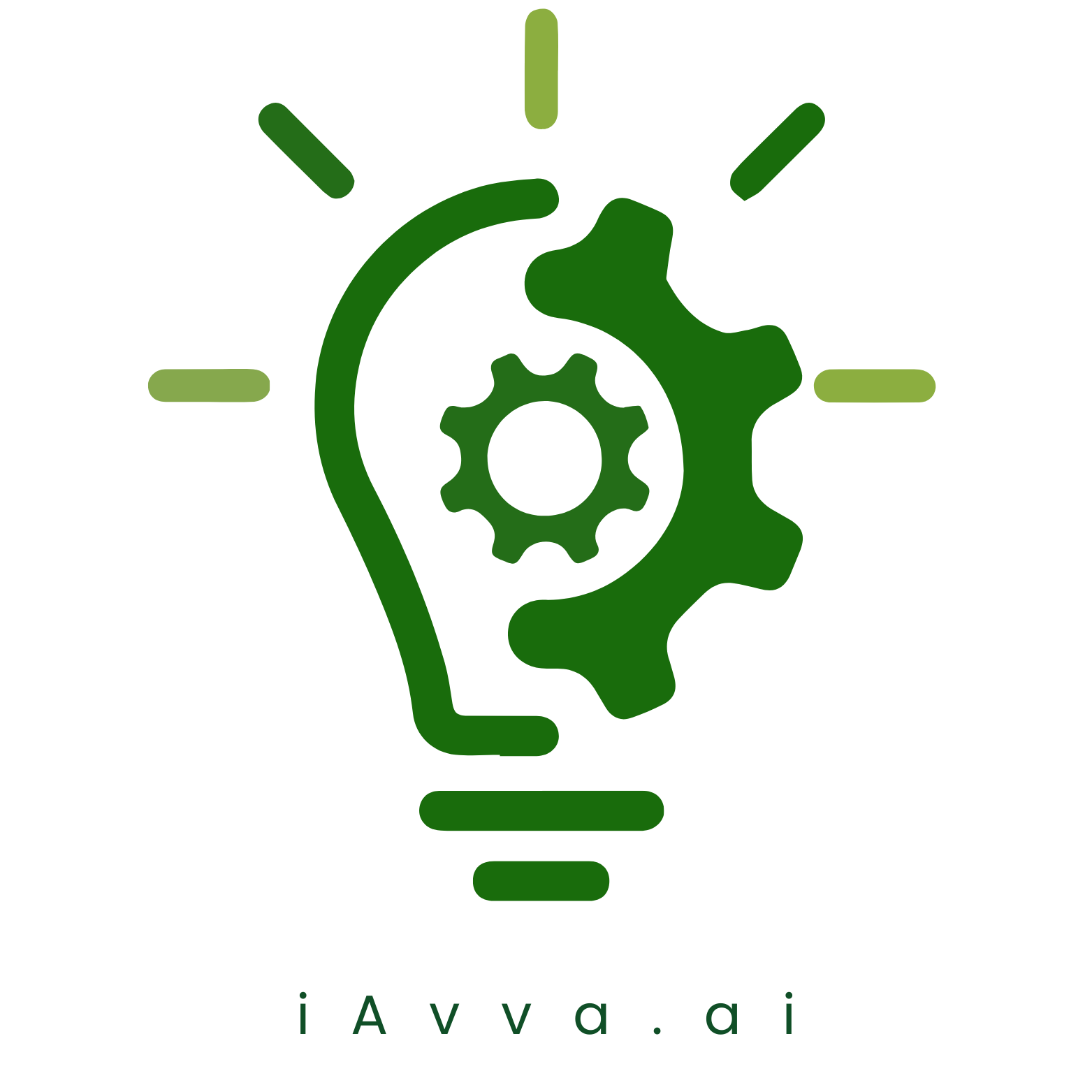Top Challenges in AI Implementation for Enterprises
Introduction
Imagine your organization has just invested millions into AI technology, only to realize that your team is more confused than empowered. Ouch, right? This scenario isn’t just a nightmare; it’s a reality for many enterprises attempting AI implementation.
According to a recent study, 70% of AI projects fail to deliver on their initial promises (McKinsey & Company). That’s not just a statistic; it’s a wake-up call for businesses diving headfirst into the world of artificial intelligence integration.
The truth is, deploying artificial intelligence technologies is not merely about flipping a switch and watching the magic happen. It requires careful planning, strategic foresight, and an understanding of the myriad challenges that come with implementing AI solutions. From cultural resistance within teams to skill gaps that leave employees scrambling for answers, the road to successful AI adoption is paved with potential pitfalls.
Key Insight: Effective AI deployment strategies can significantly enhance business transformation efforts. However, without addressing common challenges upfront, organizations risk wasting resources and time.
Consider this: in 2023 alone, the global AI market size is projected to reach $1,591.03 billion by 2030. That’s a staggering growth opportunity-but only if enterprises can navigate the complexities of scaling artificial intelligence systems.
This blog post will delve into the top challenges faced during AI implementation in enterprises and why addressing these issues is crucial for successful adoption. We’ll explore everything from integrating machine learning models into existing workflows to ensuring data quality and accessibility. Ready to transform those challenges into opportunities? Let’s get started!

Understanding AI Implementation
It’s no secret that AI implementation can feel like trying to solve a Rubik’s Cube blindfolded. A staggering 84% of organizations report facing challenges during their AI adoption process (PwC). This isn’t just a minor hiccup; it’s a full-blown roadblock that can derail even the most promising projects.
Let’s break this down. When we talk about artificial intelligence integration, we’re not merely discussing the installation of fancy algorithms and shiny interfaces. It’s about embedding AI into the very fabric of your organization, transforming workflows, and rethinking how teams collaborate. Think of it as upgrading from dial-up to fiber optic internet; it requires more than just plugging in a new router.
Key Insight: Successful AI deployment strategies hinge on understanding the unique challenges your organization faces, from cultural resistance to data quality issues.
The current landscape of AI adoption among enterprises is shifting rapidly. In 2023, the global market for AI is projected to reach an eye-watering $1,591.03 billion. Yet, despite this growth, many organizations still struggle with their AI application development. Why? Because they often overlook foundational elements like clear strategy and robust project management.
The Role of AI in Organizational Transformation
Imagine your company decides to implement robotic process automation (RPA) but fails to train employees adequately. What happens? Chaos! Employees are left grappling with unfamiliar tools while productivity plummets faster than a lead balloon. Effective training programs are essential for bridging the gap between technology and human capability.
Integrating AI into business processes isn’t just about technology; it’s about transforming mindsets. Leaders must foster an environment where innovation is encouraged and failure is viewed as part of the learning curve. This cultural shift is vital for operationalizing machine learning models effectively.
Here’s where many companies stumble: they underestimate the importance of data quality and accessibility when implementing deep learning systems or deploying artificial intelligence technologies. Without clean, organized data flowing through well-designed pipelines, even the most sophisticated algorithms will struggle to deliver value.
- Cultural Resistance: Employees might resist changes brought on by new technologies if they feel unprepared or threatened.
- Lack of Skills: Many organizations don’t invest enough in training their workforce on new tools and methodologies.
- Integration Issues: Existing systems often clash with new AI solutions, leading to inefficiencies and frustration.
- Poor Data Management: Without high-quality data, even advanced algorithms will produce subpar results.
The interesting part? Companies that prioritize their AI infrastructure setup, ensuring that both people and processes are aligned with technological advancements, often see exponential growth in efficiency and innovation. For instance, consider how Netflix leverages machine learning not just for recommendations but also for optimizing content delivery – a perfect blend of tech and strategy!
Key Challenges in AI Implementation
Here’s a jaw-dropper: 35% of US organizations are already using AI in some capacity, yet a staggering 70% of AI projects fail to meet their objectives (McKinsey & Company). So, what gives? The path to successful AI implementation is fraught with challenges that can trip up even the most well-intentioned plans.
First off, let’s talk about the elephant in the room: a lack of clear strategy and vision. Too many enterprises jump into the deep end without a life raft. They invest heavily in technology but fail to outline how it aligns with their overall business goals. It’s like trying to assemble IKEA furniture without the instruction manual-frustrating and often leading to a lopsided outcome.
Key Insight: A well-defined strategy is crucial for successful AI deployment strategies. Without it, organizations risk becoming lost in translation when it comes to their AI initiatives.
Cultural resistance is another formidable foe. Employees often view new technologies as threats rather than tools for empowerment. Imagine introducing a shiny new AI tool only to watch your team roll their eyes and cling to outdated processes like life rafts. This resistance can stem from fear of job loss or simply from being unprepared for change.
Skill Gaps and Training Needs
The skills gap is real, folks. Many teams lack the necessary expertise to effectively implement AI solutions. A recent study found that 75% of companies believe effective training is essential for digital transformation success (PwC). Yet, training often takes a backseat in the rush to adopt new technology. It’s like buying an expensive gym membership but never stepping foot inside the gym-what’s the point?
- Lack of Training: Employees need proper education on how to use new tools effectively.
- Outdated Skills: Many existing employees may not have the skill set required for advanced AI applications.
- Resource Allocation: Organizations often underfund training programs while over-investing in technology.
The irony? Companies that prioritize skill development see better outcomes when integrating machine learning models into their workflows. Take Google, for instance; they consistently invest in employee training programs focused on AI technologies, which significantly boosts productivity and innovation.
Integration with Existing Systems and Processes
Key Insight: Seamless integration between existing systems and new AI solutions is essential for operational efficiency and effectiveness.
Poor data quality also looms large as an obstacle during AI application development. If your data is messy or inaccessible, even top-notch algorithms will struggle to deliver value. Think about it: would you trust a chef who uses expired ingredients? Exactly!
- Poor Data Management: Without high-quality data flowing through well-designed pipelines, results will suffer.
- Lack of Data Governance: Organizations need robust policies around data usage and management.
- Siloed Data Sources: Information trapped in silos makes it difficult for teams to access what they need when they need it.
The ethical considerations surrounding AI also cannot be ignored. As businesses deploy artificial intelligence technologies, they must navigate complex compliance challenges related to privacy and bias mitigation. Failing here not only jeopardizes trust but could also land organizations in hot water legally!

Navigating Organizational Resistance to Change
Here’s a reality check: 70% of employees resist change, especially when it comes to adopting new technologies (Forbes). This isn’t just a statistic; it’s a loud alarm bell ringing in the ears of leaders trying to implement AI solutions. If you think throwing tech at your team will magically transform operations, think again.
Take the case of a Fortune 500 company that decided to integrate AI into its customer service operations. They rolled out an AI chatbot without any prior training for their staff. The result? Confusion reigned as employees struggled to understand how to work alongside this new “co-worker.” Instead of enhancing productivity, it became a source of frustration. Sound familiar?
Key Insight: Overcoming cultural resistance is crucial for successful AI implementation. Leaders must actively engage their teams and foster an environment where innovation is embraced, not feared.
Identifying the sources of resistance can feel like digging through layers of an onion-each layer revealing another potential pitfall. Here are some common culprits:
- Lack of Communication: If employees don’t understand why changes are happening, they’re likely to resist.
- Fear of Job Loss: Employees often worry that AI will replace them rather than enhance their roles.
- Poor Change Management: Without a structured approach, the transition can feel chaotic and unmanageable.
- Cultural Misalignment: A company culture that doesn’t value innovation will struggle with new technologies.
The interesting part? Companies that actively involve their teams in the change process tend to see better outcomes. Think about how Pixar fosters creativity by encouraging open dialogue among its teams. They don’t just throw new tools at their animators; they cultivate an environment where feedback is welcomed and ideas are shared freely.
Strategies for Fostering a Culture of Innovation and Acceptance
If you want your organization to embrace change like a long-lost friend, consider these strategies:
- Transparent Communication: Keep everyone in the loop about what changes are coming and why they matter.
- Involve Employees Early: Engage staff in discussions about AI deployment strategies from the get-go. Their insights can be invaluable!
- Create Training Programs: Equip your team with the skills they need to thrive alongside new technologies. A well-prepared employee is less likely to resist.
- Cultivate Leadership Buy-In: Leaders should model adaptability and openness, setting the tone for the rest of the organization.
The Role of Leadership in Driving Change Management Initiatives
If leadership is all about steering the ship, then navigating through resistance requires more than just holding onto the wheel-it demands finesse! Leaders must be proactive in addressing fears and concerns while championing change initiatives. Think of them as navigators guiding their crew through uncharted waters.
A study by Deloitte found that organizations with strong leadership support for change initiatives are 3 times more likely to succeed (Deloitte Insights). So what does this mean for you? Prioritize leadership training focused on change management skills, ensuring leaders can effectively communicate and motivate their teams during transitions.
Key Insight: Strong leadership commitment is essential for overcoming resistance during AI implementation. When leaders actively support change efforts, organizations become more adaptable and resilient.
The bottom line? Successfully navigating organizational resistance isn’t just about technology; it’s about people. By fostering a culture that embraces change and equipping leaders with the right tools, enterprises can turn potential roadblocks into stepping stones toward successful AI deployment strategies.
The Importance of Training and Development in AI Implementation
Here’s a reality check: 75% of companies believe effective training is essential for successful digital transformation (PwC). Yet, many enterprises dive into AI implementation without adequately preparing their workforce. It’s like trying to build a house without a solid foundation-good luck with that!
Consider this: a leading healthcare organization rolled out an AI system to streamline patient management but neglected employee training. The result? Staff struggled to use the new system effectively, leading to frustration and decreased productivity. Instead of enhancing operations, the AI became a burden. Ouch!
Key Insight: Investing in targeted training programs can significantly enhance the effectiveness of AI deployment strategies. A well-trained workforce is crucial for maximizing the benefits of artificial intelligence integration.
Let’s break this down into three key areas that organizations should focus on:
Assessing Current Skill Levels Within the Organization
Before jumping into training programs, it’s vital to assess where your team stands. Conducting skill assessments can reveal gaps in knowledge and experience related to implementing AI solutions. This way, you can tailor your training initiatives accordingly. Consider tools like surveys or skill matrices to gauge proficiency levels across different teams.
Designing Effective Training Programs for Employees at All Levels
A one-size-fits-all approach simply doesn’t cut it when it comes to training. Different roles require different skills, especially in the context of AI application development. Here are some strategies for effective program design:
- Role-Specific Training: Tailor content based on job functions. For instance, data scientists may need deep dives into machine learning algorithms, while project managers might benefit from understanding AI project management best practices.
- Hands-On Learning: Incorporate practical exercises that allow employees to interact with AI tools directly. Simulations or sandbox environments can be invaluable for building confidence.
- Continuous Learning Opportunities: Create pathways for ongoing education through workshops, online courses, or mentorship programs focused on emerging AI technologies.
The Impact of Continuous Learning on Successful AI Adoption
The journey doesn’t end once initial training is complete; continuous learning is essential for keeping pace with rapidly evolving technologies. Organizations that foster a culture of lifelong learning often see better outcomes during their AI adoption process. Companies like Amazon have implemented continuous development programs that empower employees to upskill regularly-leading to enhanced innovation and agility.
The interesting part? Research shows that businesses prioritizing employee development are 21% more profitable, emphasizing the direct correlation between skilled teams and successful AI technology implementation guides.
Key Insight: A commitment to ongoing training not only boosts employee morale but also enhances overall business performance during the digital transformation with AI.

Best Practices for Successful AI Implementation in Enterprises
Let’s face it: 90% of AI initiatives fail to deliver expected results, largely due to poor planning and execution (Gartner). If that statistic doesn’t send shivers down your spine, I don’t know what will! The truth is, successful AI implementation isn’t just about having the latest technology-it’s about having a solid strategy in place. So, how do you ensure your enterprise doesn’t become another cautionary tale?
Key Insight: A clear roadmap and proactive stakeholder engagement are critical components for successful AI deployment strategies. Without these, organizations risk heading into uncharted waters without a map.
Establishing a Clear Roadmap for Implementation
A roadmap is more than just a fancy document; it’s your GPS in the AI jungle. Start by defining specific goals aligned with your business objectives. Ask yourself: What problems are you trying to solve? Once you have clarity on your objectives, outline the steps necessary to achieve them. Think of it as assembling IKEA furniture-you need the right parts and a clear plan to avoid ending up with a wobbly chair.
- Define Objectives: Identify what success looks like for your organization.
- Create Milestones: Break down the implementation process into manageable phases.
- Allocate Resources: Ensure you have the right talent and technology at each stage of deployment.
The twist? Companies that invest time upfront in creating detailed roadmaps often find they can pivot more easily when challenges arise. For instance, IBM’s Watson Health division saw significant improvements in patient outcomes after clearly mapping their AI integration strategy across departments.
Engaging Stakeholders Throughout the Process
If you think implementing AI is solely an IT project, think again! Engaging stakeholders from various departments is crucial for ensuring buy-in and maximizing the impact of new technologies. Picture this: launching an AI tool without involving end-users is like throwing a surprise party for someone who hates surprises. Not fun!
- Identify Key Stakeholders: Involve leaders from different business units early on to gather diverse insights.
- Create Feedback Loops: Establish mechanisms for continuous feedback during implementation to address concerns promptly.
- Cultivate Champions: Identify enthusiastic team members who can advocate for AI initiatives within their departments.
The interesting part? Organizations that prioritize stakeholder engagement often experience smoother transitions and higher adoption rates. Just look at how Starbucks integrated AI into its mobile app by involving baristas and customers alike-resulting in personalized experiences that keep customers coming back!
Pilot Projects as a Means to Test and Refine Strategies
Pilot projects are like dipping your toes into the water before cannonballing into the deep end. They allow you to test assumptions, identify flaws, and refine strategies without risking everything upfront. Think of them as trial runs where failure is not just accepted but expected-and used as a learning opportunity!
- Select Relevant Use Cases: Choose pilot projects that align closely with strategic objectives and have measurable outcomes.
- Elicit Feedback: Gather insights from users during pilots to make necessary adjustments before full-scale deployment.
- Anatomy of Success: Analyze results rigorously; what worked well? What didn’t? This reflection will inform future implementations.
A classic example comes from Netflix, which utilized pilot testing extensively when developing its recommendation algorithms. By refining their approach based on user feedback during beta tests, they significantly enhanced user engagement-a win-win situation!
Final Takeaway: Implementing AI solutions requires more than just technology; it demands strategic planning, stakeholder engagement, and iterative testing through pilot projects. By following these best practices, enterprises can transform potential pitfalls into stepping stones toward successful AI technology implementation.
The Future of AI in Enterprises: Trends to Watch Out For
Here’s a bold statement: by 2025, 75% of enterprises will have deployed AI technologies at scale (Gartner). This isn’t just a trend; it’s a revolution reshaping how businesses operate. If you’re not paying attention, you might just find your organization left in the dust.
Let’s get real for a moment. The future of AI implementation is not about experimenting with chatbots or dabbling in predictive analytics. It’s about harnessing the full power of artificial intelligence to drive business transformation and operational efficiency. Companies that can effectively navigate this landscape are poised to thrive, while those that lag behind risk becoming obsolete.
Key Insight: The next wave of AI deployment strategies will focus on enhancing human capabilities rather than replacing them. This shift is crucial for fostering innovation and collaboration within teams.
The interesting part? The integration of AI into business processes is evolving beyond mere automation. We’re entering an era where organizations will leverage AI for strategic decision-making, predictive insights, and enhancing customer experiences. Imagine using AI algorithms not just to analyze data but also to predict market trends and consumer behavior with uncanny accuracy!
Trends Shaping the Future of AI Implementation
- Hyper-Personalization: Expect AI solutions to deliver personalized experiences at an unprecedented scale. Companies like Amazon are already perfecting this art, tailoring recommendations based on individual user behavior.
- AI-Driven Decision Making: As machine learning models become more sophisticated, businesses will increasingly rely on them for critical decisions-from supply chain management to customer engagement strategies.
- Cloud-Based AI Implementations: The shift towards cloud computing will facilitate more scalable and flexible AI solutions, allowing enterprises to deploy resources efficiently without heavy upfront investments.
- Ethical AI Practices: With great power comes great responsibility. Organizations are beginning to prioritize ethical considerations in their AI technology implementation, ensuring compliance with regulations while addressing biases head-on.
- Integration with IoT: The convergence of AI and Internet of Things (IoT) technologies will create smarter ecosystems where devices communicate seamlessly, leading to enhanced operational efficiencies.
A common misconception is that implementing AI is solely an IT concern. Wrong! The future demands cross-departmental collaboration to ensure successful AI system integration. Marketing teams need insights from data scientists; HR must align talent development with emerging technologies. It’s all hands on deck!
The road ahead isn’t without its bumps-many organizations still struggle with data quality issues and cultural resistance when it comes to adopting new technologies. However, those willing to invest in training programs and foster a culture open to change will emerge as leaders in their industries.
A Real-World Example: Netflix’s Evolution
If you want a case study in successfully leveraging AI for business growth, look no further than Netflix. The streaming giant has transformed its entire operation through data-driven insights-everything from content creation decisions based on viewer preferences to optimizing streaming quality using machine learning algorithms. Their ability to adapt quickly has kept them ahead of competitors like Hulu or Disney+ who are still playing catch-up.
The Takeaway: Embracing the future means understanding that AI implementation isn’t just about technology; it’s about transforming organizational culture and processes. Prepare your teams now so they can leverage these advancements effectively tomorrow!

Conclusion
Let’s wrap this up with a reality check: AI implementation is not just a tech upgrade; it’s a complete organizational overhaul. In fact, 70% of companies face significant challenges during their AI adoption process (PwC). If that doesn’t make you rethink your strategy, what will?
The journey through AI deployment is littered with obstacles, from cultural resistance to skill gaps and integration issues. But here’s the kicker: each challenge presents an opportunity for growth and innovation. By tackling these hurdles head-on, organizations can transform their operations and drive meaningful change.
Key Insight: Prioritizing strategic planning is essential for successful AI deployment strategies. Without a clear roadmap, even the best technology can fall flat.
Recap of Key Challenges and Solutions
- Lack of Clear Strategy: Develop a comprehensive plan that aligns AI initiatives with business goals.
- Cultural Resistance: Foster an environment that embraces change through transparent communication and employee involvement.
- Skill Gaps: Invest in targeted training programs to equip teams with the necessary skills for implementing AI solutions.
- Integration Issues: Ensure seamless integration between new AI technologies and existing systems to avoid operational disruptions.
- Poor Data Quality: Establish robust data governance policies to maintain high-quality data for effective AI application development.
The path to successful AI implementation isn’t just about technology; it’s about leadership commitment and strategic foresight. Leaders must champion the cause, ensuring that both people and processes are aligned with technological advancements.
Your call to action? Start prioritizing strategic planning today! Dive deep into your organization’s unique challenges and craft tailored solutions that pave the way for successful AI technology implementation. The future is bright for those willing to invest in their people and processes!
















Leave a Reply